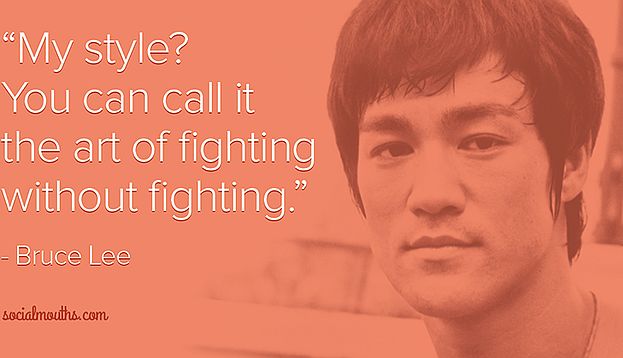The rapid evolution of the game industry over the past twenty years has completely changed the platforms, the business models, and even the geographic origins of the revenue in the business. We’ve gone from selling console games in boxes at retail stores, mostly in North America, Japan, and Western Europe, to online games, mobile games, PC games and console games where most of the revenue is derived digitally with China being a major part of the market. The technology has undergone multiple revolutions, platforms are completely different in virtually every respect, and the audience demographic has gone from “teenage boys of all ages” to “anyone who can see the screen and activate the controls.” Is it any wonder, then, that game marketing has undergone equally massive changes?
Game marketing has moved from being mostly about placing ads in the right magazines and creating packaging to a dazzling array of social media, user acquisition, video, influencers, events, and a race to create ever more interesting and unusual ways to make an audience aware of your game and get them to spend money on it.

What is marketing in the classic sense The term does date back to 1561, after all, and its precise meaning has changed many times in the intervening centuries. Google, the source of all wisdom these days, tells us marketing is “the action or business of promoting and selling products or services, including market research and advertising.” Merriam-Webster goes with “the process or technique of promoting, selling, and distributing a product or service” and “an aggregate of functions involved in moving goods from producer to consumer.”
For the game industry, marketing in the 1980’s was a department well-separated from product development. Games would get completed, then thrown over the wall into the marketing department for the packaging, advertising and PR functions; the game would ship and basically be ignored by all thereafter, while the process repeated with the next title. Mostly the two departments didn’t talk to each other much. Product development thought the people in marketing didn’t know much about games, and marketing thought people in product development knew little about the realities of the marketplace. Both were generally correct.
Now, marketing is becoming an integral part of game development, as games move from fire-and-forget things to ongoing services that publishers would like to keep going for years. Marketers have to think about millions of customers and having an individual relationship with them, rather than doing things for a handful of retail buyers and never seeing or talking to an actual game-player. Where’s marketing You’re soaking in it, or you should be. Now it has become the art of marketing without marketing, to play off of the classic Bruce Lee riff from Enter The Dragon.
The fascinating thing about this evolution, to this veteran of both game development and marketing, is how some game companies don’t even think of what they are doing as marketing any more. Riot Games, for instance, generally refuses to admit that they do any marketing when questioned about it. It’s true in that what they do doesn’t fall into the traditional category. There are no ad campaigns for League of Legends. There are no brochures, no banner ads, no product placement or billboards. So are they doing any marketing at all
Of course they are, but it’s not perceived that way within the company. The company is focused on making the game better, which results in good word of mouth — that is, in effect, a marketing act while it’s also a product development activity. When the company creates new champions or skins, players get excited and talk about them. Riot posts about that on their blog, and releases some cool videos to show the world what’s new. Those are marketing activities.
The biggest expenditure for Riot Games in terms of marketing is the entire effort Riot puts into eSports. Try to tell that to Dustin Beck, VP of eSports at Riot, and he’ll tell you that you’re crazy. Riot spends a ton of money on eSports (they won’t say how much, but it’s probably north of $100 million annually) and it’s not something the company makes a profit on directly. The benefit of eSports, of course, is that tens of millions of people are engaged with it, it gets people excited about the game and encourages them to play more and to imagine that they, too, might someday become a pro player. That sounds like a terrific marketing activity, but it’s certainly unlike traditional marketing functions.
The massive community effort put forth by Chris Roberts’ team over at Cloud Imperium Games for Star Citizen is another good example of the art of marketing without marketing. The team has put tremendous effort into direct interaction with the community of backers, who have spent more than $70 million so far on this game that hasn’t even been released yet. What Cloud Imperium is doing with Star Citizen isn’t marketing in any traditional sense. They are making cool things that people want to buy, and making cool videos, and engaging the audience. Is there any doubt that Star Citizen will have a long life and generate a lot of money, and a lot of fun for its players
If you need another example, Minecraft was never marketed in the traditional sense, either. It grew explosively from the thousands of videos that were created and viewed, and the articles that were being written about it. Part of that was the nature of the game design impelled you to want to show other people what you’d done — and some of the things you can do are astonishing, like building a fully functional computer inside the game. It was also a deliberate act of marketing, though in an inverse way — Mojang never tried to shut down or control the videos that people were posting about its game. Yes, there’s probably plenty of objectionable things appearing in Minecraft videos if you look dark corners of the Internet, but Mojang didn’t care. And neither did the audience.
For an example of how not to do this properly, one need look no further than Nintendo, which is striving to gain control over YouTube videos about Nintendo products, and in the process essentially shutting down a valuable marketing avenue that the company could surely benefit from in difficult times.
The art of marketing without marketing doesn’t mean abandoning traditional marketing activities — not if they’re working, anyway. It’s a recognition that building a community, fostering gamer’s efforts to share content with their friends, enabling competition and cooperation among gamers, and helping your players become product evangelists are all part of the marketing effort — as is creating the best game possible, with features and services that are centered around creating a terrific customer experience above all else.
Marketers, you have to think not about marketing, but about your ultimate goals. Create a game that’s truly satisfying, and an environment around that game that nurtures and supports the best aspects of the game and the players. Or, as Bruce Lee would advise, “Don’t concentrate on the finger or you will miss all that heavenly glory.”

